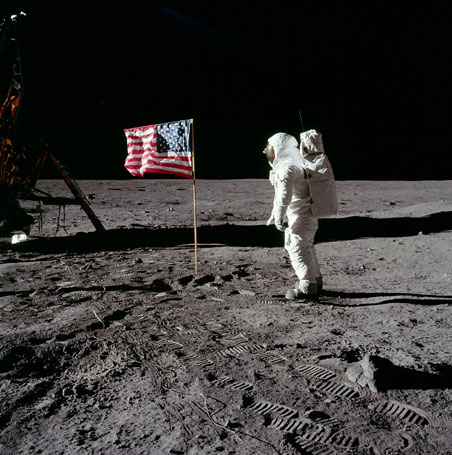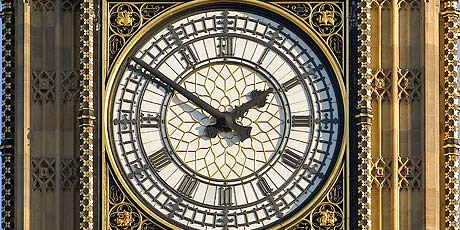Archives
July 28, 2009
Conspiracy theories are nothing new, and unfortunately, they’ve only gained popularity in this digital age. If you believed everything you read on the Internet, you too would be convinced that Castro was involved in the assassination of JFK, the moon landing was a hoax, and the 9/11 attacks were an inside job.
However, so-called “birthers” — people who comprise a nascent, troubling movement that questions President Obama’s birthplace (and therefore his legitimacy as president) despite a wealth of evidence to the contrary — have taken conspiracy theories to an entirely new and ludicrous level.
Look, let me make this really clear.
Barack Obama was born in Honolulu on Aug. 4, 1961, nearly two years after Hawaii became the 50th state. Therefore, he meets the “natural born Citizen” constitutional requirement of a U.S. president. In fact, Obama’s birth certificate and a pair of 1961 birth announcements in Honolulu newspapers attest to this fact. Emphasis on the word fact.
If that’s not enough for you, then I can only conclude that you are (1) rather pathetic, (2) unable to cope with reality, and (3) in desperate need of a hobby. You certainly don’t have to like Obama or his policies, but I cannot tolerate people who spin dangerous webs of lies about the man. Our commander-in-chief deserves better.
[ No. 535 ]
July 20, 2009
Exactly 40 years ago today, three Americans completed the most astounding achievement in human history. On July 20, 1969, the astronauts aboard the Apollo 11 mission landed on the surface of the moon.
That simple fact still amazes me to this day. I just wish I had been alive to see it happen on live television.

For a moment, consider the technology that was available to the average American in 1969. The majority of people still used rotary phones, watched black-and-white TV sets, and wound their wristwatches every day. Yet, during that same time, our country achieved a completely unthinkable engineering project — one that sent three men 240,000 miles away to land on Earth’s only natural satellite.
(And to all you conspiracy-theory boneheads: Yes, it really happened.)
[ No. 534 ]
Photo credit: NASA, image AS11-40-5874
July 18, 2009
I’d like to wish a belated, happy 150th birthday to Big Ben. (The Guardian, Telegraph, and Times Online contain excellent coverage and multimedia related to Big Ben’s sesquicentennial.)

When people hear the name Big Ben, they usually think of the world-famous clock tower atop London’s Houses of Parliament. But the name actually refers to the tower’s massive bell, which weighs 13.7 tons and first struck the hour on July 11, 1859. And given the age of its mechanical works, the Great Clock is remarkably accurate. In fact, the time can be adjusted by two-fifths of a second by the simple act of adding or removing a copper penny on top of the clock’s giant pendulum.
Of the many global landmarks that I want to visit someday, Big Ben is at the top of my list. The BBC’s footage of Big Ben on New Year’s Eve gives me chills!
(On a related note, here’s something you probably didn’t know. The four dials of Philadelphia City Hall’s clock tower, which began keeping time on Jan. 1, 1899, are actually three feet larger in diameter than those of Big Ben. Amazing!)
[ No. 533 ]
Photo credit: United Kingdom Parliament
July 16, 2009
Sometimes, change can be a good thing — even when it’s actually a deliberate step back in time.

Last month, the Philadelphia 76ers announced their decision to revert to their previous red-white-and-blue logo and uniforms from 1978–1991. I always liked that classic ball logo and completely fitting color scheme when I was a kid, and the series of redesigns ever since have been a nightmare by comparison.
Not everyone shares my approval of this old-school revival. Inquirer columnist Frank Fitzpatrick writes that the reprise of the logo from the Sixers’ glory days is a “telltale sign of desperation,” and that successful, iconic teams rarely, if ever, alter their look. (I can think of one classic design that hasn’t changed in ages, and I strongly hope it stays that way.)
I agree with Fitzpatrick that aesthetics can only go so far; it remains to be seen whether the 76ers’ throwback look will accompany some signficant success on the court. But I still believe it’s a step in the right direction, and at least the players will look presentable for the first time in nearly two decades.
* * * * *
And yet, at other times, change can be horrifyingly bad.
Over the Fourth of July weekend at the shore, I caught a few terrific episodes of The Twilight Zone during a marathon on the Sci Fi Channel. In the lower-right corner of the screen, I noticed a cryptic promotion that intermittently transformed the Sci Fi logo into something that read “Syfy.”

After I returned home, I learned that Sci Fi had decided to formally change its name to Syfy as of July 7. So what’s the deal with the new name?
Their site’s FAQ states that, “Although we love the name Sci Fi, because it’s a generic term, we can never own it.” In addition, since they’ve “always aired shows that many people wouldn’t consider strictly science fiction,” they needed a genre-independent name to communicate their “unique programming point” (whatever that is).
I watch very few shows on The Network Formerly Known as Sci Fi, but still, the new moniker is incredibly stupid. When spoken aloud, it still sounds like “sci fi,” which is what the channel is trying to distance itself from. The odd spelling of “Syfy” only encourages ridicule; many critics are already pronouncing it “Siffy.” And most of all, I agree with leading experts that a business should never turn its back on loyal customers — in Syfy’s case, the channel’s new name risks alienating its core audience.
Just one more marketing scheme that lacks a shred of common sense.
[ No. 532 ]
Image credits: Wikipedia (76ers logo);
SGN (SyFy logo)
July 8, 2009
With a heavy heart, I will discuss the first fatal monorail accident to take place at Walt Disney World since the resort opened in 1971, and will do my best to offer my perspective on this tragedy.
Austin Wuennenberg, a 21-year-old senior from Stetson University in DeLand, Fla., was killed when two monorails collided in the early-morning hours of July 5, the night of Fourth of July festivities at Disney World. Based on multiple stories online (including detailed accounts from local affiliates WKMG and WESH in Orlando), it appears that the driver of Monorail Pink backed into the driver’s cab of Wuennenberg’s train, Monorail Purple, without knowing that Purple was on the same track and stationary inside the Ticket and Transportation Center.
Shortly after the accident made national headlines, I received messages from several friends who expressed shock at the accident and gratitude that I didn’t suffer the same fate during my summer job as a monorail pilot in 1995.
Looking back on my three-month assignment at Disney World, I don’t recall feeling overly concerned about the hazards of my job. Sure, it was fairly daunting to sit at the controls of a 200-foot-long train and take responsibility for the safety of thousands of passengers each day, especially when you’re just a 20-year-old college student. And throughout the rigorous, seven-day training regimen to become a driver, my superiors were emphatic about the importance of preparedness and safety at all times. In particular, the final “check-out” day of my training included several challenging, real-time tests of unlikely but completely possible situations.
But compared to the fast thrill rides throughout the resort, monorails are stable, low-speed vehicles, and the entire transit system is carefully designed to prevent major problems from occurring in the first place. In fact, an on-board system called MAPO (short for Mary Poppins, of course) was implemented to avoid collisions by detecting the location of the next train ahead. Trains are safe to proceed under a green MAPO signal, but when an amber MAPO alert indicates that another train is relatively close, drivers are required to know the exact numeric location of the next hold point. If you ignored such an alert and blew through the hold point, your train would automatically stop under a red MAPO alert, and you’d also find yourself in serious trouble with your supervisor.
Although I’m stunned by the carnage and extensive damage from this collision, I’m not as surprised that the crash took place at around 2 a.m., which was the unofficial closing time for the monorail system on most of my evening shifts. After the last guests are dropped off, the drivers communicate via radio with workers in the “shop” (a large maintenance facility and overnight garage) to carefully guide the six-car trains through switches that lead away from the main tracks and back to the shop. This process requires the driver to manually override the MAPO system; even now, I remember that this task was the trickiest part of the job, and one that required extremely clear communication in order to avoid a tragic mishap like this one.
Within 36 hours of the accident, Disney officials implemented additional safety measures and reopened the monorail system with its 10 remaining trains. And although the crash took place on private, Disney-owned property, the National Transportation Safety Board launched an unprecedented investigation of the incident yesterday.
My deepest condolences go out to the family and friends of my fellow Walt Disney World cast member, Austin Wuennenberg. I will post additional updates as they become available.
[ No. 531 ]
